Chinese Ceramics from the Junkunc Collection at Christie's New York, 23-24 september 2021
Stephen Junkunc, III, circa 1930.
Stephen Junkunc, III ranks amongst the most renowned collectors of Chinese ceramics and works of art, and is known for collecting a wide breadth of works of the highest standards of quality. At its height, his collection comprised over two-thousand examples of porcelain, jade, bronzes, Buddhist sculpture and paintings, and included two examples of the legendary Ru ware, of which only eighty-seven examples are known in the world. A superb Ru dish from the Junkunc Collection sold at Christie’s in 1992 and achieved a world record for a Chinese ceramic. (Fig. 1) The dish now resides in an important Asian collection. Christie’s has also been honored to have handled one of the outstanding paintings, a 13th-14th century landscape, Travelers in Autumn Mountains, in the style of the 11th century painter Guo Xi. (Fig. 2)
Fig. 1 A rare and important Ruyao dish, Northern Song dynasty (AD 960-1127). Christie’s New York, 3 December 1992, lot 276.
Fig. 2 Anonymous, Travelers In Autumn Mountains, In The Style Of Guo Xi (C. 1001-1090), (13th - 14th century). Christie’s New York, 22 March 1999, lot 178.
Stephen Junkunc, III was born in Budapest, Hungary, and emigrated to the US as a young boy. His father, Stephen Junkunc, II was a tool-and-die maker who founded General Machinery & Manufacturing Company in 1918 on South Aberdeen Street in Chicago, focusing on the manufacture of knife-edge fuel nozzle heads. In 1933, the company moved to North Keeler Street, where it still exists today. With the outbreak of World War II, GMMCO endeavored to help in the war effort by manufacturing various aircraft parts, specializing in aircraft engine seals. Their devotion to quality and service led to commissions to manufacture critical parts for cuttingedge jet engines. After over one hundred years, GMMCO still remains a family business.
Stephen Junkunc, III began collecting in earnest in the 1940s, and his most ardent buying period was in the 1950s and 1960s. His collecting was always informed by diligent study — he kept libraries at both his home and his office and read voraciously, whether quickly over a short lunch break or at a more leisurely pace into the small hours of the morning.
When acquiring objects for his collection, he only dealt with the most renowned dealers of the mid-twentieth century, including Bluett & Sons, Sparks, Yamanaka & Co., Ltd., C.T. Loo & Cie, Tonying & Company and Hisazo Nagatani. The Chicago based gallery of Yamanaka & Co., Ltd., which had opened in 1928 played a particularly strong role in Junkunc’s voracious passion for collecting. Nagatani (d. 1994), formerly the manager of Yamanaka in Chicago, was among the most influential to Stephen Junkunc, III, supplying works to the collection.
Junkunc kept his collection secure in a World War II bomb shelter in his home, and entering the rooms has been compared to the legend of Aladdin entering the cave—the visitor was immediately awed by the porcelain, jades, sculptures and other treasures on display. Such a variety of materials and wealth of artistry, in such unexpected surroundings, must indeed have been an extraordinary sight.
From his letters, it seems that Chinese ceramics were one of Junkunc’s first passions in collecting, and he set a standard for quality and dogged determination that remained unflagging throughout his collecting career. He wrote to dealers such as W. Dickinson & Sons in 1935, requiring them to seek out monochromes from the Kangxi and Yongzheng periods. Nothing but the best would do: only “cabinet pieces” of “very fine quality” would suffice. A similar request for peachbloom and underglaze-red porcelains was penned to Bluett & Sons in 1936, and another to H.R. Norton a few months later for “nice pieces in monochromes… but not the clumsy types with poor color. *
From ceramics, Junkunc turned his attention to other categories such as Buddhist sculpture, and also to earlyChinese jade carvings, which presented an opportunity for more scholarly study. Junkunc’s scholarly approach to Chinese art led him to forge friendships with preeminent scholars in the field, such as Alfred Salmony (1890-1958), a leading authority on Chinese jade and professor at the Institute of Fine Arts, New York University. Starting as early as 1950, Junkunc and Salmony discussed their shared passion for Chinese jades. Salmony had been planning an encyclopedic two-volume history entitled Chinese Jades of All Periods and selected pieces from Junkunc’s collection to be featured in the publication. Junkunc, along with English collector Desmond Gure (1905-1970), contributed to the research. Salmony passed away before the publication could be completed, but letters between Desmond Gure and Junkunc reveal that Salmony entrusted Gure and Junkunc to complete his publication. The first volume was published posthumously and was entitled Chinese Jade Through the Wei Dynasty, and included a number of jade carvings in the present sale. Other important works from the Junkunc Collection included in Salmony’s publication included an important Western Han dynasty jade beaker, which sold at Christie’s New York in September 2006. Other masterpieces of Chinese jade in the Junkunc Collection included an imperial set of ten white jades and a rare white jade figure of Buddha, which sold at Christie’s in March 2007 and March 2010, respectively.
With his breadth of collecting, exacting aesthetic standards and scholarly approach, Stephen Junkunc, III was a true connoisseur-collector. On his passion and commitment to collecting, Junkunc wrote: “it becomes a disease. But it’s the one thing in the world that never pales or becomes static. It always holds the challenge of more to learn.”
The legacy of Stephen Junkunc, III has been preserved through his generous donations to institutions throughout the United States. He frequently loaned works to the Art Institute of Chicago, and bequests from his collection can also be found in the Milwaukee Public Museum in Wisconsin and in the Lowe Art Museum at the University of Miami, Florida. His interest in Chinese art was continued by his son, Stephen Junkunc, IV, who has judiciously ensured that the next generation of connoisseurs and enthusiasts would have the opportunity to enjoy many items of his celebrated collection.
Lot 717. A small green-glazed tripod jar and cover, Tang dynasty (AD 618-907); 3 in. (7.6 cm.) diam. Estimate: USD 5,000 - USD 7,000. © Christie's 2021
The small jar of compressed globular form with an everted rim is raised on three short cabriole supports, and is covered overall with a soft green glaze suffused with fine crackles. The cover with a small bud finial is similarly glazed.
Provenance: Stephen Junkunc, III (d. 1978) Collection.
Lot 718. A rare large brown-spotted greyish-green-glazed jar, Eastern Jin dynasty (AD 317-420); 3 in. (7.6 cm.) diam. Estimate: USD 6,000 - USD 8,000. © Christie's 2021
The ovoid jar is decorated with brown spots on a greyish-green glaze that stops above the foot to reveal the buff body.
Provenance: Nagatani, Inc., Chicago, 1959.
Stephen Junkunc, III (d. 1978) Collection.
Lot 719. A Cizhou-type cream-glazed ribbed ewer, Liao-Jin dynasty (AD 907-1234); 7 ¼ in. (18.4 cm.) high. Estimate: USD 5,000 - USD 7,000. © Christie's 2021
The ewer has a ribbed, globular body and is applied on the shoulder with a short spout and a curved handled and is covered with a cream-colored glaze that stops above the foot.
Provenance: Warren E. Cox & Associates, New York, 1959.
Stephen Junkunc, III (d. 1978) Collection.
Lot 720. A Cizhou carved and molded cream-glazed pillow, Jin dynasty (1115-1234); 12 in. (30.5 cm.) long. Estimate: USD 6,000 - USD 10,000. © Christie's 2021
The top of the pillow is carved through white slip to a brown ground with a spray of two peony blossoms at the center enclosed by a floral border. The sides are molded with floral scroll.
Provenance: Stephen Junkunc, III (d. 1978) Collection.
Lot 721. A small Longquan celadon tripod censer, Southern Song dynasty (1127-1279); 3 ¾ in. (9.5 cm.) diam. Estimate: USD 8,000 - USD 12,000. © Christie's 2021
The compressed body is raised on three short feet and has a flat everted rim, with three narrow flanges beginning at a slight ridge on the shoulder and trailing down each leg. The censer is covered overall with a soft sea-green glaze of even tone.
Provenance: Warren E. Cox & Associates, New York, 1957.
Stephen Junkunc, III (d. 1978) Collection.
Lot 722. A Longquan celadon dragon jar and cover, Southern Song dynasty (1127-1279); 9 in. (22.7 cm.) high. Estimate: USD 20,000 - USD 30,000. © Christie's 2021
The lower body of the jar is carved with a wide band of upright petals below the ribbed upper body encircled by an applied four-clawed dragon with ridged dorsal spine pursuing a flaming pearl. The cover is surmounted by a crane with extended wings, and both the vessel and cover are covered overall with a glaze of soft sea-green tone.
Provenance: Stephen Junkunc, III (d. 1978) Collection.
Lot 723. A small cobalt blue-glazed dish, Jiajing six-character incised mark within a double circle and of the period (1522-1566); 3 ¾ in. (9.4 cm.) diam., cloth box. Estimate: USD 15,000 - USD 20,000. © Christie's 2021
The dish with rounded sides and slightly everted mouth rim is covered overall with a rich turquoise-blue glaze.
Provenance: Frank Caro, Chinese Art, New York, 1967.
Stephen Junkunc, III (d. 1978) Collection.
Lot 724. A soft-paste white-glazed washer, 18th-19th century; 4 ¾ in. (11.7 cm.) wide. Estimate: USD 7,000 - USD 9,000. © Christie's 2021
The shallow washer is decorated with bats in flight, and is covered with a crackled glaze of soft creamy-white tone.
Provenance: Stephen Junkunc, III (d. 1978) Collection, by 1961.
Lot 725. A small celadon-glazed tripod censer, Ming-Qing dynasty; 3 ¼ in. (8.2 cm.) diam. Estimate: USD 8,000 - USD 12,000. © Christie's 2021
The small censer with everted mouth rim has three narrow flanges beginning at the shoulder and trailing down each of the three conical legs, and is covered overall with a crackled-glaze of pale bluish-grey tone.
Provenance: Stephen Junkunc, III (d. 1978) Collection.
Lot 726. A famille verte pear-shaped vase, Kangxi period (1662-1722); 15 ¼ in. (39 cm.) high. Estimate: USD 7,000 - USD 9,000. © Christie's 2021
The small censer with everted mouth rim has three narrow flanges beginning at the shoulder and trailing down each of the three conical legs, and is covered overall with a crackled-glaze of pale bluish-grey tone.
Provenance: Frank Caro Chinese Art, New York, 1966.
Stephen Junkunc, III (d. 1978) Collection
Lot 727. A pair of small gilt-decorated famille verte bowls, Kangxi period (1662-1722); 2 7/8 in. (7.2 cm.) diam., each, cloth box. Estimate: USD 8,000 - USD 12,000. © Christie's 2021
Each bowl with rounded sides is finely decorated on the exterior with blossoming branches growing amongst rocks and extending into the interior.
Provenance: Stephen Junkunc, III (d. 1978) Collection.
Lot 728. An unusual biscuit washer in the form of a furled leaf, late 19th-early 20th century; 6 in. (15.1 cm.) long, silk stand. Estimate: USD 10,000 - USD 15,000. © Christie's 2021
The vessel is modeled in the form of a furled leaf folding inwards along its edges, and is finely decorated on the sides and the interior with crickets and blossoming flower branches.
Provenance: Stephen Junkunc, III (d. 1978) Collection.
Christie's. Important Chinese Ceramics and Works of Art, New York, 23-24 september 2021

/https%3A%2F%2Fprofilepics.canalblog.com%2Fprofilepics%2F1%2F0%2F100183.jpg)
/https%3A%2F%2Fstorage.canalblog.com%2F03%2F02%2F119589%2F96711876_o.jpg)
/https%3A%2F%2Fstorage.canalblog.com%2F11%2F31%2F119589%2F94773502_o.jpg)
/https%3A%2F%2Fstorage.canalblog.com%2F20%2F83%2F119589%2F94772815_o.jpg)
/https%3A%2F%2Fstorage.canalblog.com%2F26%2F72%2F119589%2F75604929_o.jpg)
/https%3A%2F%2Fstorage.canalblog.com%2F59%2F60%2F119589%2F26458628_o.jpg)
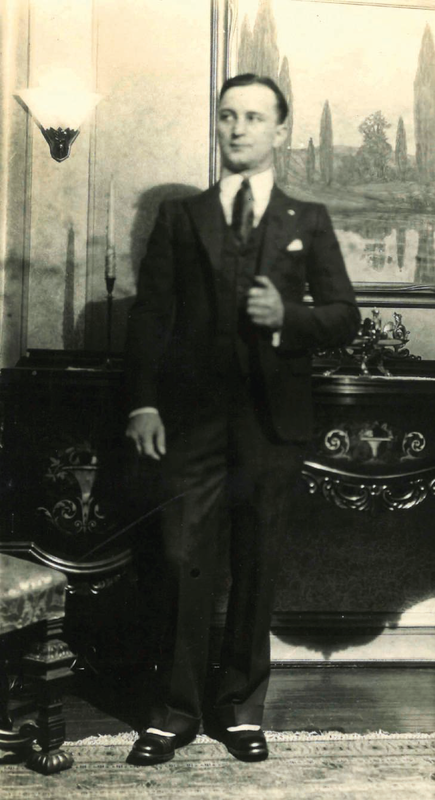


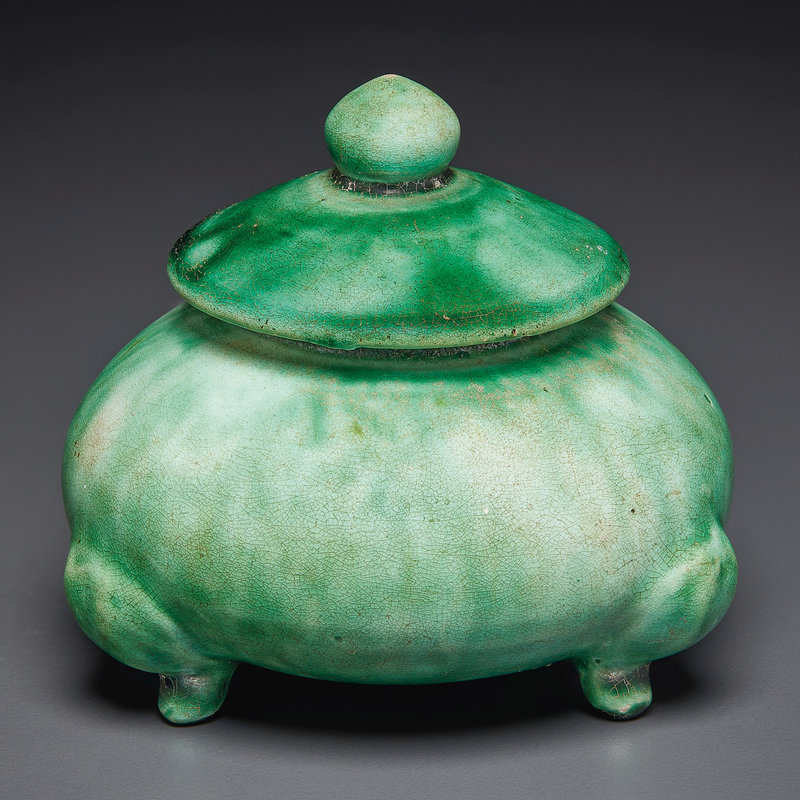




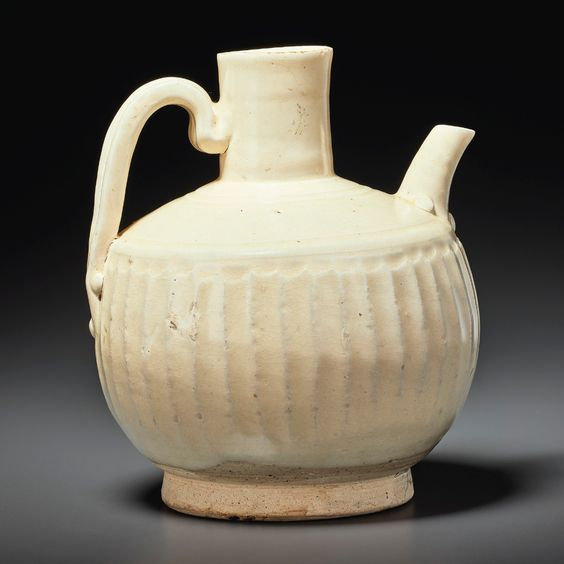



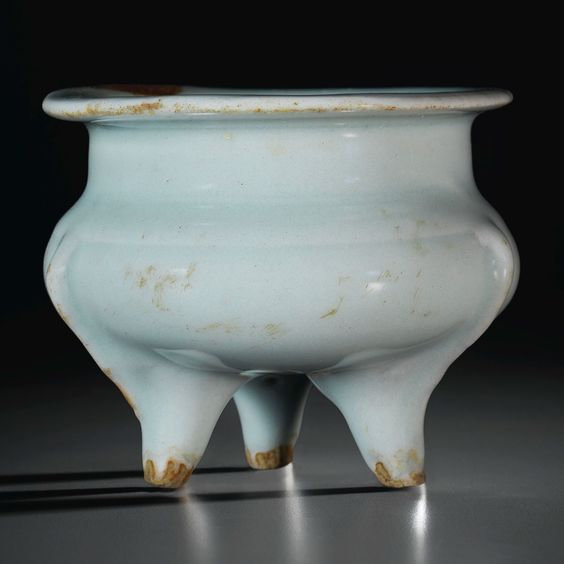

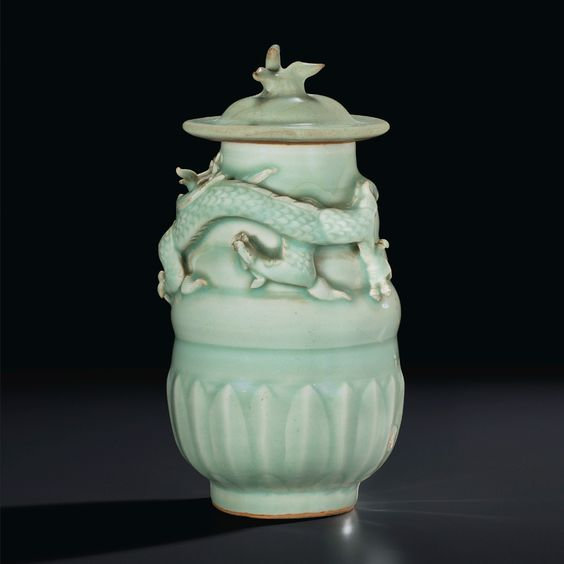




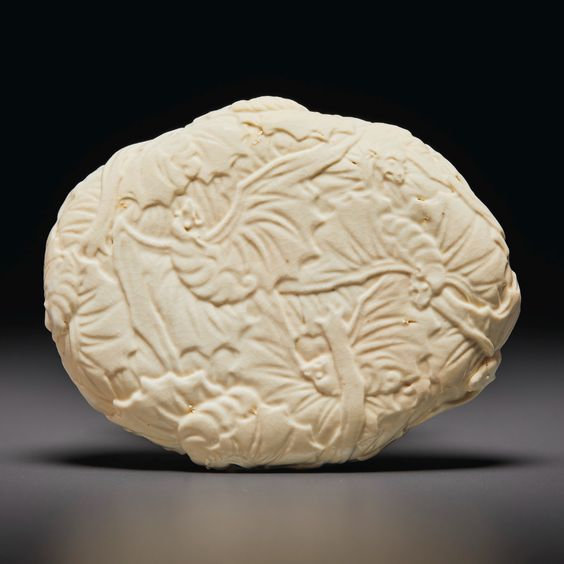





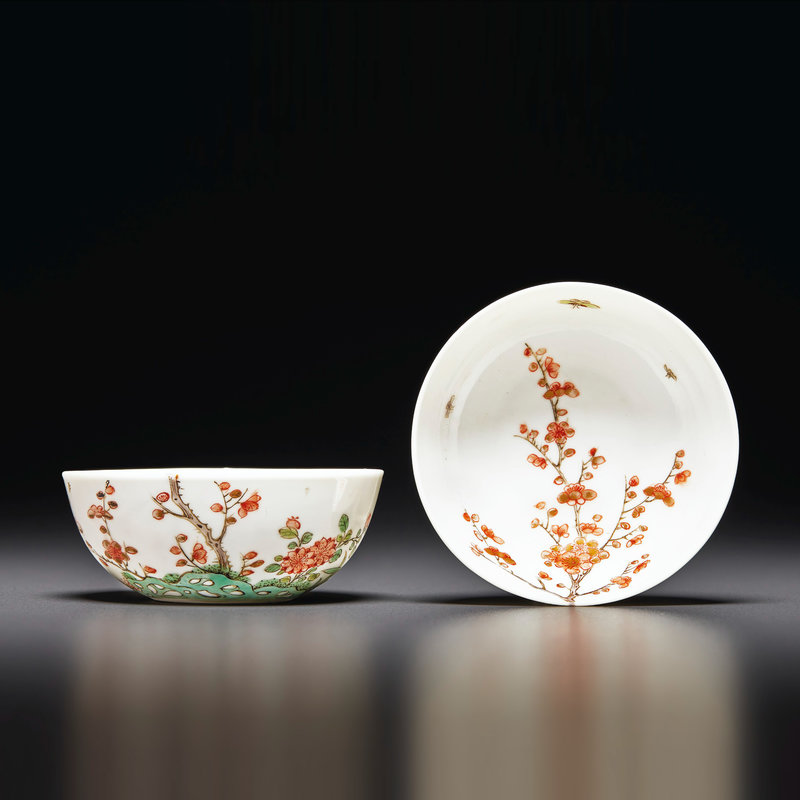
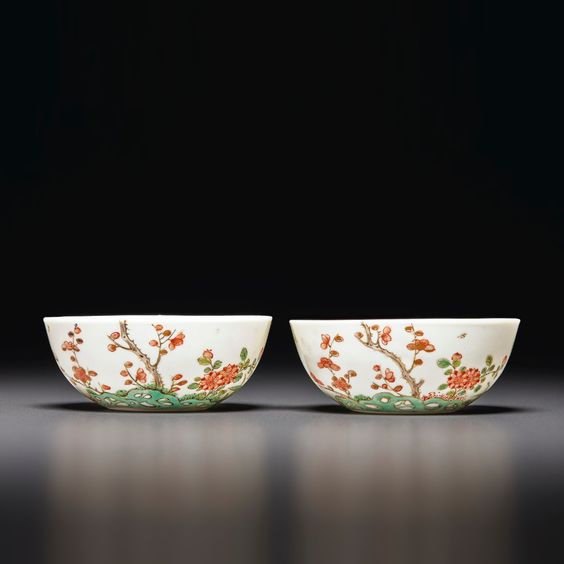

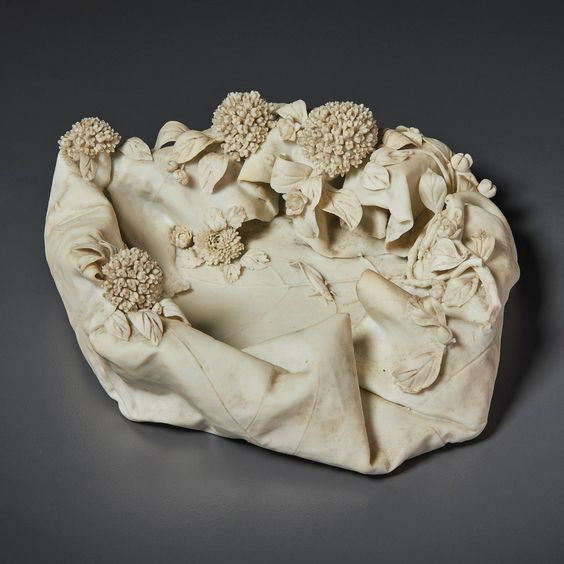




/http%3A%2F%2Fstorage.canalblog.com%2F54%2F82%2F119589%2F129402116_o.jpg)
/http%3A%2F%2Fstorage.canalblog.com%2F67%2F39%2F119589%2F128506099_o.jpg)
/http%3A%2F%2Fstorage.canalblog.com%2F94%2F36%2F119589%2F126386716_o.jpg)
/http%3A%2F%2Fstorage.canalblog.com%2F77%2F65%2F119589%2F126386586_o.jpg)